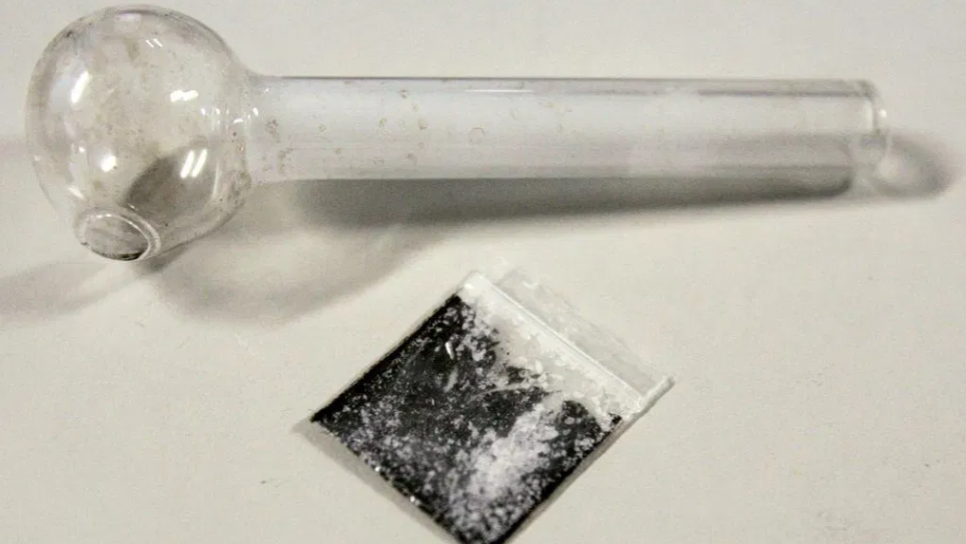If you think someone is using meth, they might have something called a meth bubbler. It’s like a long glass tube with a glass bowl on the end. But meth pipes can also be made from things you find at home, like soda cans or light bulbs.
Here’s what you should know about meth pipes and how to recognize them:
What Is a Meth Bubbler
A meth bubbler is a kind of pipe used for smoking methamphetamine. It’s not always the same as the pipes used for smoking marijuana. Sometimes, people make meth pipes out of things you find at home, which can make them harder to recognize.
You should watch out for glass pipes, like the ones you can buy at stores that sell smoking stuff. These pipes can be used for meth even though they are often used for marijuana. Meth bubblers have a long glass part you put your mouth on, and there’s a bowl at the end. Crack pipes look similar, but they don’t have a bowl because crack cocaine is smoked differently from meth.
Handmade Meth Pipes
If you don’t find any glass pipes, there might be homemade ones.
People sometimes use aluminum cans by making a dent in the middle and poking small holes. If it’s used for meth, the part with the dent turns black quickly from the meth burning.

Light bulbs are also used as meth pipes. People empty them and put meth inside, then they put a tube, like the empty shell of a pen, into the bulb to use as a mouthpiece.
It’s not common to have a broken light bulb lying around for other reasons, so if you see one, it could be a sign of drug use.
Signs a Pipe Is Used for Meth
If you find a pipe and want to know if it’s used for meth or something else, look for these signs:
- Check if the pipe has a yellowish, waxy stuff inside. That’s a clear sign of meth use.
- The part of the pipe where meth is burned might turn black over time. If it’s a glass pipe, you can clean these marks, but homemade pipes might keep them.
- Because meth gets really hot, the person using the pipe might accidentally burn themselves. So, look for burn marks on them.
How to Recognize Other Meth Stuff
Meth pipes and bongs are just one example of drug paraphernalia that people who use meth might have in their homes. Since there are different ways to use meth, you might see other small things like:
- Little bags, often used to put meth and crack cocaine inside.
- Needles, are sometimes used to put meth into the body.
- Aluminum foil, used to smoke meth and painkiller pills.
- Containers that look strange, like fake soda cans, which could hide drugs.
- Pens, straws, and rolled-up dollar bills, used for snorting drugs.
- If you see these things, especially a lot of them together, it’s a sign that someone might be using drugs.
The next step is to talk to your loved one about how they’re feeling. You can also help them find a harm reduction program that can give them information to stay safer, even if they’re not ready to quit yet.
Signs of Meth Use
Apart from finding strange things in someone’s home, you might also notice some health problems and changes in your loved one.
According to SAMHSA, some of the clear signs of meth use are:
- Losing weight because meth makes them not want to eat.
- Disappearing for days, which might be because they are using drugs a lot.
- Feeling very tired and having low energy sometimes, which could be withdrawal after using drugs.
- Having periods where they have a lot of energy, which might mean they are using a drug like meth that gives them energy.
- Mood swings, like being very angry or agitated.
After using meth for a while, their teeth might get really bad. It’s so bad that people call it ‘meth mouth,’ and it can cause cavities, pale gums, and losing teeth.
Getting Help for Meth Addiction
Dealing with addiction is tough, but there are programs that can help you or someone you care about if they’re addicted to meth.
The National Institute on Drug Abuse (NIDA) has free resources to help you figure out how to talk to someone who might be addicted. You can also contact a treatment center for guidance.
Here are some options
Inpatient treatment at a hospital: This is usually the first choice if someone has health problems or is likely to start using again. It usually lasts for as long as the detox, which is about 2–4 weeks.
Inpatient treatment at a place where you stay: Here, you get care and support 24/7 from medical and non-medical staff. You might stay for weeks or months.
Intensive outpatient treatment: You go to appointments every day but still live at home. It’s also called “partial hospitalization” and is cheaper than staying in a hospital, but you need to be committed and have a way to get there.
Outpatient treatment: You go to appointments as needed, as decided with your healthcare provider. If you do outpatient treatment, you can also live in a place for people in recovery if your home isn’t safe or supportive.
There’s no one-size-fits-all way to treat meth addiction. What matters is talking to your healthcare provider to figure out the right treatment for you.
Check Out Now: What Do Meth Pipes Look Like?- NYC Urgent Care: What drugs should not be taken with benzonatate?
- What Is Crank Drug?
- What Are Blues Drugs?
- Top Rehab Centers in the USA; Best Rehab Near Me!
- What Are Whippets Drugs? Is it safe to consume?
- TCL 341 Pill | Uses, Side Effects, and More
- How To Get High Without Drugs?
- MARIJUANA ABUSE: WHAT IS GREENING OUT MEAN?
- Cymbalta Withdrawal: Side Effects & Symptoms
- How long does Suboxone withdrawal last?
- Suboxone Strips: Effective and Convenient Treatment for Opioid Dependency
- Do Shrooms Go Bad Over Time?
- Understanding EtOH: The Dangers of Ethanol Alcohol Abuse
- Mushrooms That Look Like a Penis
- Melmac Mushrooms

I am a passionate technology and business enthusiast, constantly exploring the intersection where innovation meets entrepreneurship. With a keen eye for emerging trends and a deep understanding of market dynamics, I provide insightful analysis and commentary on the latest advancements shaping the tech industry.
